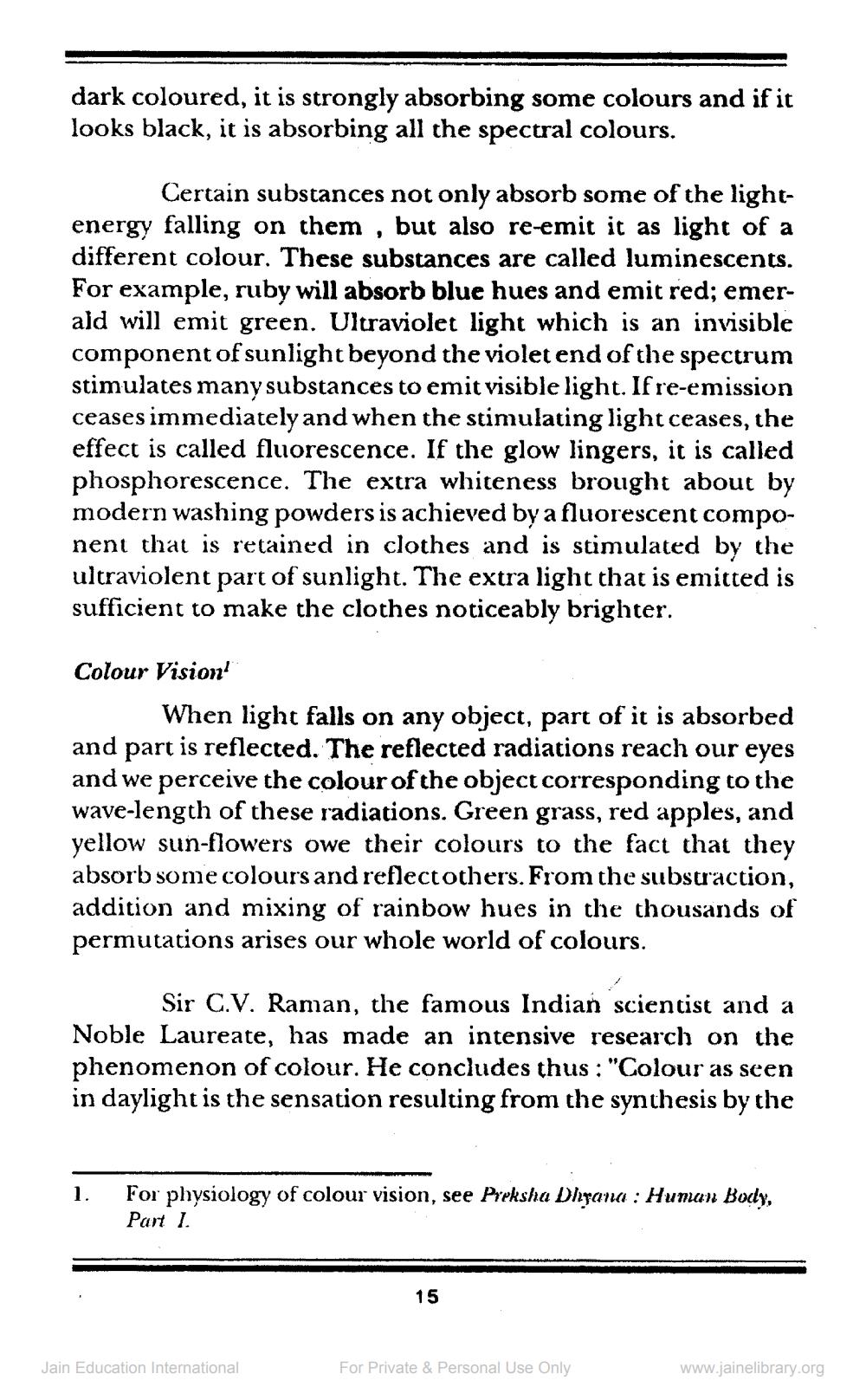________________
dark coloured, it is strongly absorbing some colours and if it looks black, it is absorbing all the spectral colours.
Certain substances not only absorb some of the lightenergy falling on them, but also re-emit it as light of a different colour. These substances are called luminescents. For example, ruby will absorb blue hues and emit red; emerald will emit green. Ultraviolet light which is an invisible component of sunlight beyond the violet end of the spectrum stimulates many substances to emit visible light. If re-emission ceases immediately and when the stimulating light ceases, the effect is called fluorescence. If the glow lingers, it is called phosphorescence. The extra whiteness brought about by modern washing powders is achieved by a fluorescent component that is retained in clothes and is stimulated by the ultraviolent part of sunlight. The extra light that is emitted is sufficient to make the clothes noticeably brighter.
Colour Vision
When light falls on any object, part of it is absorbed and part is reflected. The reflected radiations reach our eyes and we perceive the colour of the object corresponding to the wave-length of these radiations. Green grass, red apples, and yellow sun-flowers owe their colours to the fact that they absorb some colours and reflect others. From the substraction, addition and mixing of rainbow hues in the thousands of permutations arises our whole world of colours.
Sir C.V. Raman, the famous Indian scientist and a Noble Laureate, has made an intensive research on the phenomenon of colour. He concludes thus : "Colour as seen in daylight is the sensation resulting from the synthesis by the
1.
For physiology of colour vision, see Preksha Dhyana : Human Body, Part 1
15
Jain Education International
For Private & Personal Use Only
www.jainelibrary.org




